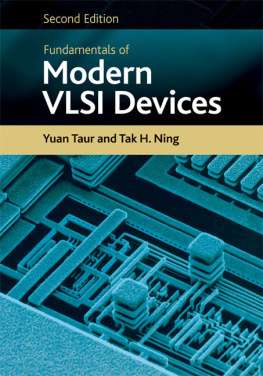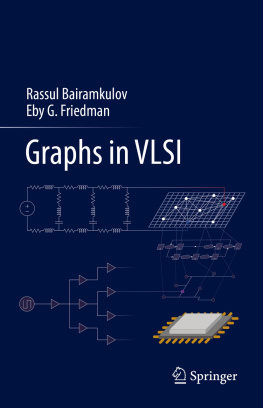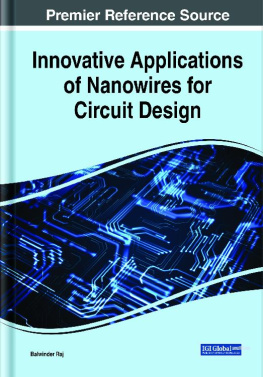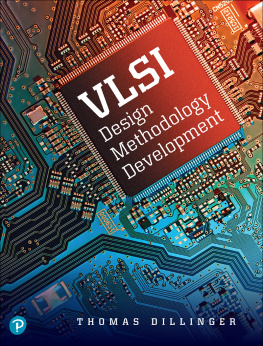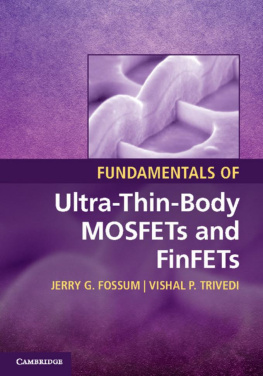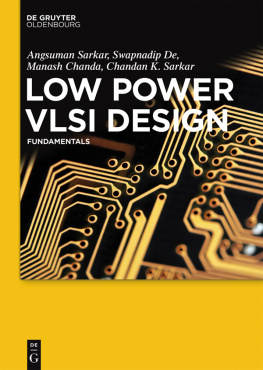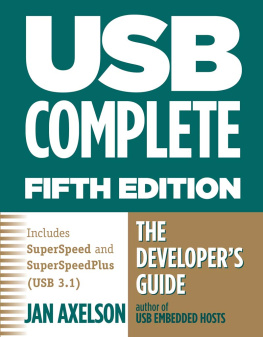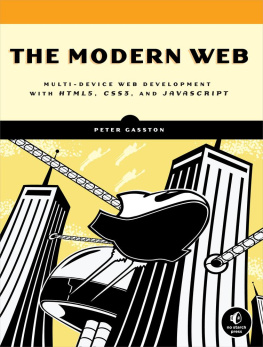Fundamentals of Modern VLSI Devices
Learn the basic properties and designs of modern VLSI devices, as well as the factors affecting performance, with this thoroughly updated second edition. The first edition has been widely adopted as a standard textbook in microelectronics in many major US universities and worldwide. The internationally renowned authors highlight the intricate interdependencies and subtle tradeoffs between various practically important device parameters. An in-depth discussion of device scaling and scaling limits of CMOS and bipolar devices is also provided. Equations and parameters provided are checked continuously against the reality of silicon data, making the book equally useful in practical transistor design and in the classroom.
New to this edition:
- Every chapter has been updated to include the latest developments, such as MOSFET scale length theory, high-field transport models, and SiGe-base bipolar devices.
- Two new chapters cover read and write operations of commonly used SRAM, DRAM, and non-volatile memory arrays, as well as silicon-on-insulator (SOI) devices, including advanced devices of future potential.
- More useful appendices : The number has doubled from 9 to 18, covering areas such as spatial variation of quasi-Fermi potentials, image-force-induced barrier lowering, and power gain of a two-port network.
- New homework exercises at the end of every chapter engage students with real-world problems and test their understanding.
YUAN TAUR is Professor of Electrical and Computer Engineering at the University of California, San Diego. He spent 20 years at IBMs T. J. Watson Research Center where he won numerous invention and achievement awards. He is an IEEE Fellow, Editor-in-Chief of IEEE Electron Device Letters , and holds 14 US patents.
TAK H. NING is an IBM Fellow at the T. J. Watson Research Center, New York, where he has worked for over 35 years. A Fellow of the IEEE and the American Physical Society, and a member of the US National Academy of Engineering, he has authored more than 120 technical papers and holds 36 US patents. He has won several awards, including the ECS 2007 Gordon E. Moore Medal, the IEEE 1991 Jack A. Morton Award, and the 1998 Pan Wen-Yuan Foundation Outstanding Research Award.
Fundamentals of Modern VLSI Devices
Second Edition
Yuan Taur
University of California, San Diego
Tak H. Ning
IBM T. J. Watson Research Center, New York
CAMBRIDGE UNIVERSITY PRESS
Cambridge, New York, Melbourne, Madrid, Cape Town, Singapore, So Paulo, Delhi
Cambridge University Press
The Edinburgh Building, Cambridge CB2 8RU, UK
Published in the United States of America by Cambridge University Press, New York
www.cambridge.org
Information on this title: www.cambridge.org/9780521832946
Cambridge University Press 1998 , 2009
This publication is in copyright. Subject to statutory exception and to the provisions of relevant collective licensing agreements, no reproduction of any part may take place without the written permission of Cambridge University Press.
First published 1998
Second edition 2009
First paperback edition 2013
Printed and bound in the United Kingdom by the MPG Books Group
A catalog record for this publication is available from the British Library
Library of Congress Cataloging in Publication data
Taur, Yuan, 1946
Fundamentals of modern VLSI devices / Yuan Taur, Tak H. Ning. 2nd ed.
p. cm.
ISBN 978-0-521-83294-6
1. Metal oxide semiconductors, Complementary. 2. Bipolar transistors.
3. Integrated circuits Very large scale integration.
I. Ning, Tak H., 1943 II. Title.
TK7871.99.M44T38 2009
621.395dc22
2009007334
ISBN 978-0-521-83294-6 Hardback
ISBN 978-1-107-63571-5 Paperback
Cambridge University Press has no responsibility for the persistence or accuracy of URLs for external or third-party Internet websites referred to in this publication, and does not guarantee that any content on such websites is, or will remain, accurate or appropriate.
Contents
Preface to the first edition
It has been fifty years since the invention of the bipolar transistor, more than forty years since the invention of the integrated-circuit (IC) technology, and more than thirty-five years since the invention of the MOSFET. During this time, there has been a tremendous and steady progress in the development of the IC technology with a rapid expansion of the IC industry. One distinct characteristic in the evolution of the IC technology is that the physical feature sizes of the transistors are reduced continually over time as the lithography technologies used to define these features become available. For almost thirty years now, the minimum lithography feature size used in IC manufacturing has been reduced at a rate of 0.7 every three years. In 1997, the leading-edge IC products have a minimum feature size of 0.25 m.
The basic operating principles of large and small transistors are the same. However, the relative importance of the various device parameters and performance factors for transistors of the 1- m and smaller generations is quite different from those for transistors of larger-dimension generations. For example, in the case of CMOS, the power-supply voltage was lowered from the standard 5 V, starting with the 0.6- to 0.8- m generation. Since then CMOS power supply voltage has been lowered in steps once every few years as the device physical dimensions are reduced. At the same time, many physical phenomena, such as short-channel effect and velocity saturation, which are negligible in large-dimension MOSFETs, are becoming more and more important in determining the behavior of MOSFETs of deep-submicron dimensions. In the case of bipolar devices, breakdown voltage and base-widening effects are limiting their performance, and power dissipation is limiting their level of integration on a chip. Also, the advent of SiGe-base bipolar technology has extended the frequency capability of small-dimension bipolar transistors into the range previously reserved for GaAs and other compound-semiconductor devices.
The purpose of this book is to bring together the device fundamentals that govern the behavior of CMOS and bipolar transistors into a single text, with emphasis on those parameters and performance factors that are particularly important for VLSI (very-large-scale-integration) devices of deep-submicron dimensions. The book starts with a comprehensive review of the properties of the silicon material, and the basic physics of pn junctions and MOS capacitors, as they relate to the fundamental principles of MOSFET and bipolar transistors. From there, the basic operation of MOSFET and bipolar devices, and their design and optimization for VLSI applications are developed. A great deal of the volume is devoted to in-depth discussions of the intricate interdependence and subtle tradeoffs of the various device parameters pertaining to circuit performance and manufacturability. The effects which are particularly important in small-dimension devices, e.g., quantization of the two-dimensional surface inversion layer in a MOSFET device and the heavy-doping effect in the intrinsic base of a bipolar transistor, are covered in detail. Also included in this book are extensive discussions on scaling and limitations to scaling of MOSFET and bipolar devices.

